BenQ beCreatus DP1310 Hybrid Dock Review: Seamless Connectivity
Retail price: $299.00
We are a participant in the Amazon Services LLC Associates Program, an affiliate advertising program designed to provide a means for us to earn fees and support our channel by linking to Amazon.com and affiliated sites.
Disclaimer: BenQ sent us a unit of the beCreatus DP1310 Hybrid Dock free of charge to review, but all thoughts and opinions expressed in this review are our own and were not discussed with the company prior to publishing.
For those of us who have multiple devices set up for work and play, you know how hard it is to have a minimal setup and be able to switch between them back and forth regularly, especially if they’re different platforms like Mac and PC. I’ve been battling this problem ever since I started working from home, with the majority of corporate devices I’ve been given being Windows laptops while I prefer using a MacBook as my primary home computer. While I had become accustomed to another dock that Alex had given to me, it was rather finicky when connecting between laptops to my display and required specific ports for certain things more than others. I was delighted when the BenQ team reached out to us asking if we wanted to check out the beCreatus DP1310 docking station and have now been using it for a few months.
versatile for work and play
It has dual source integration, so it can connect to multiple devices at a time via USB-C and HDMI 2.1 and you can switch between them with a single switch.
The BenQ beCreatus DP1310 docking station has quite the long list of features for those looking to use it for multiple purposes. It has dual source integration, so it can connect to multiple devices at a time via USB-C and HDMI 2.1 and you can switch between them with a single switch. This is ideal for those looking to swap between a computer and/or PS5 or other gaming console simultaneously. You can also connect up to 3 monitors at 4K 60Hz via USB-C. My current setup just has one gigantic monitor and I will occasionally use my laptop monitor if needed, but having this option is fantastic.
My biggest concern was the number of ports on the docking station. I have quite a few devices that are typically plugged in, from my laptop and keyboard to my webcam and microphone. The beCreatus DP1310 features four ports in the front and nine in the back. In the front are two USB-A ports, one fast charging USB-C port, a 3.5 mm headphone jack and the primary switch you’d use to go back and forth between devices. On the back is another USB-C fast charging port, three HDMI 2.1 ports, one DisplayPort, an Ethernet port and three USB-A ports. The DP1310 shows the connectivity options on the back with which ports can be used for in and out. The docking station can confidently power a variety of devices including the MacBook M1 and M2 chips, PS5, Xbox gaming devices and more. It can also charge devices up to 100W fast charging via USB-C and can transfer files via USB from speeds at up to 10 Gbps.
lots of Uses
In the past few months that I’ve been using this docking station, I have had very few qualms with it. Coming from my previous docking station, I find myself being able to seamlessly switch between my Windows laptop and MacBook on a daily basis without issue. Using the docking station, I no longer have to have a separate cable to charge my laptops and it can simultaneously connect to my display and charge the device all together.
In addition to that, it’s pretty common for me to use almost all the ports at the same time. In this instance, my keyboard and mouse are plugged in via USB-A in the back with my microphone while my webcam uses one of the two remaining USB-A ports in the front. This leaves one open USB-A port to use when I need to plug in an additional device to charge like my keyboard. My display connects via HDMI port and my laptop is both charged and connected via a USB-C cable. Even with all this, there’s still room for more if I were to change my setup in the future.
A Couple Quirks
The dock can stand vertically
With having this many devices connected, I was worried about how the docking station would hold up over time. I’ve been able to navigate constant usage with everything at once effortlessly. That being said, my biggest gripes with the beCreatus DP1310 docking station have been less with its functions and more aesthetic.
The docking station itself is impressively modern and minimalist looking. I’m a fan of the dark gray metallic color and the cleanliness of the forest green switch that’s easy to operate. The build quality is evident here and it looks and feels sturdy. Despite occasionally getting warm, I have never felt that the material was too warm to touch. There’s also rubber grips on the bottom that keep it sturdy and in place. While I prefer my docking station lying down on my desk, there’s also an option to stand it up vertically as well.
The docking station has an aluminum alloy surface that BenQ advertises as being great for cooling performance. While this may be true, I have a bit of a hate love relationship with this design. I prefer this look over just a smooth rectangular surface because these crevices also act as a nice design function, but I have noticed over time that it’s an easy way to capture dust and other small particles in between. This means I’m using a blower or duster to constantly clean it.
Additionally, because I have quite a few peripherals connected to the docking station, there is a potential that your desk setup may look a bit messy if you have multiple cables connected to it. While the use of both front and back ports is effectively useful, I’ve occasionally cringed when I look down to see cables stretching in various directions on my desk surface. Cable management is a lot of work and hubs dictate the flow of the cables. Unless your computing accessories use a wireless USB connection, you’re going to have to do some cable management.
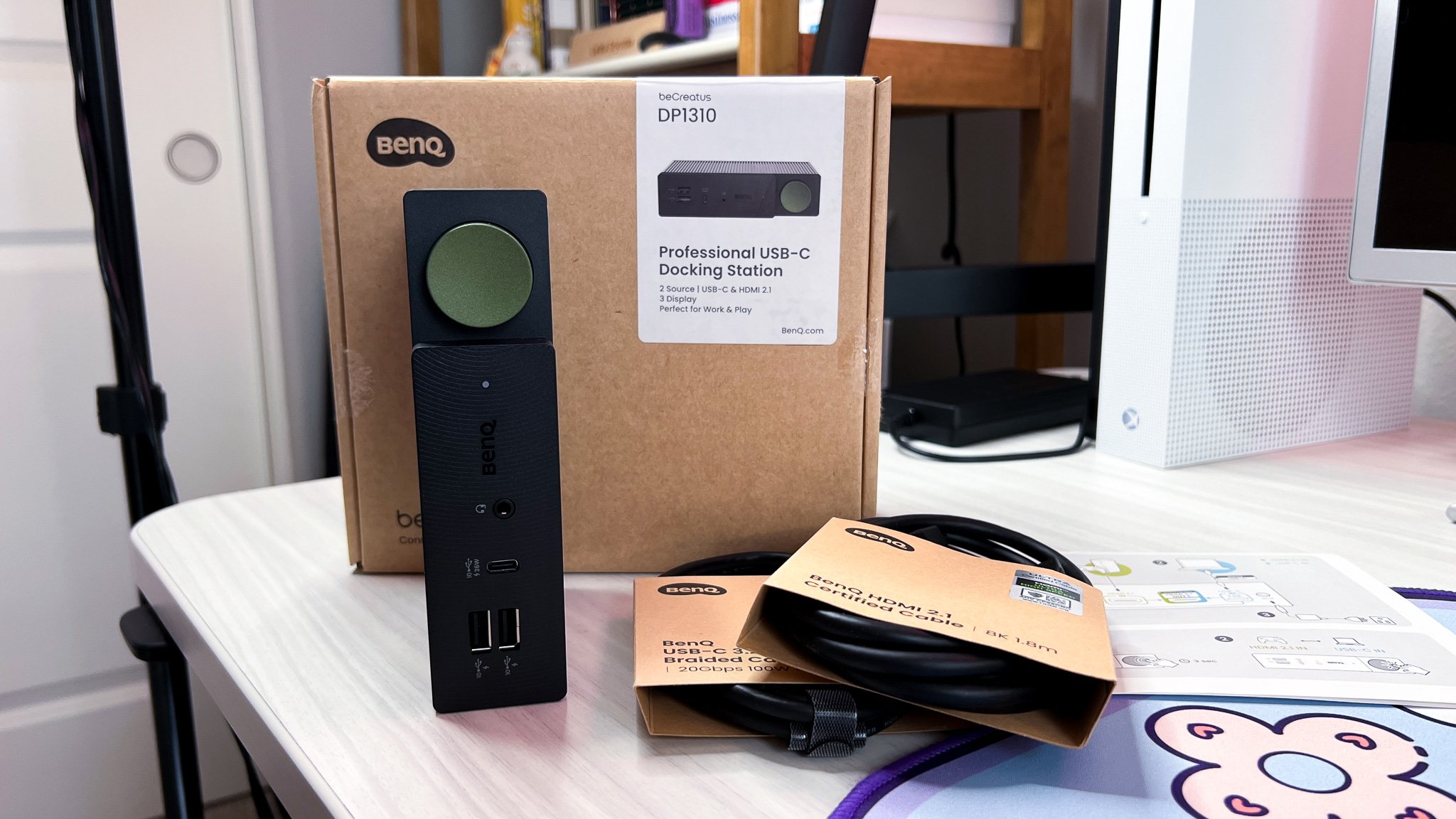

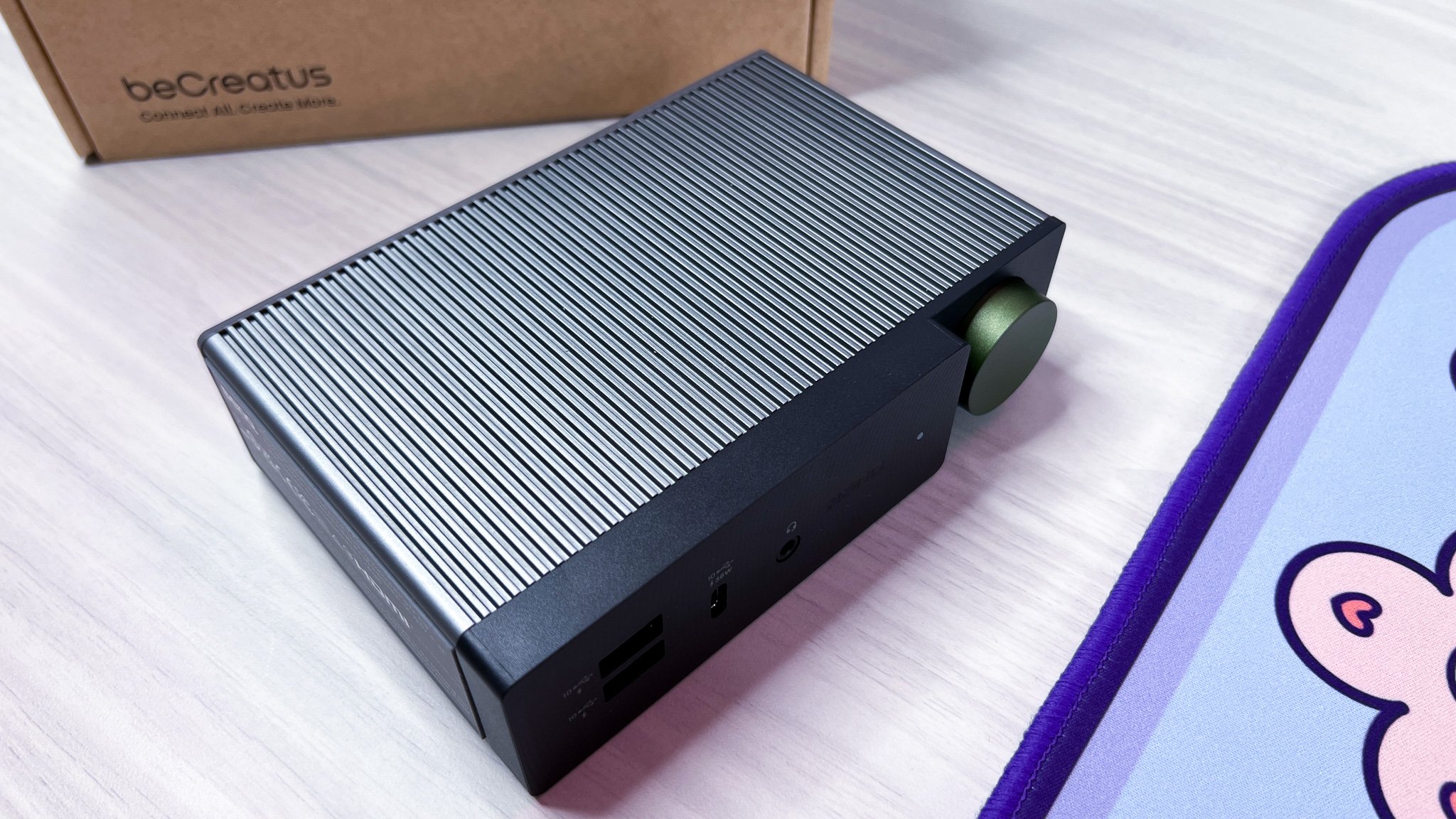
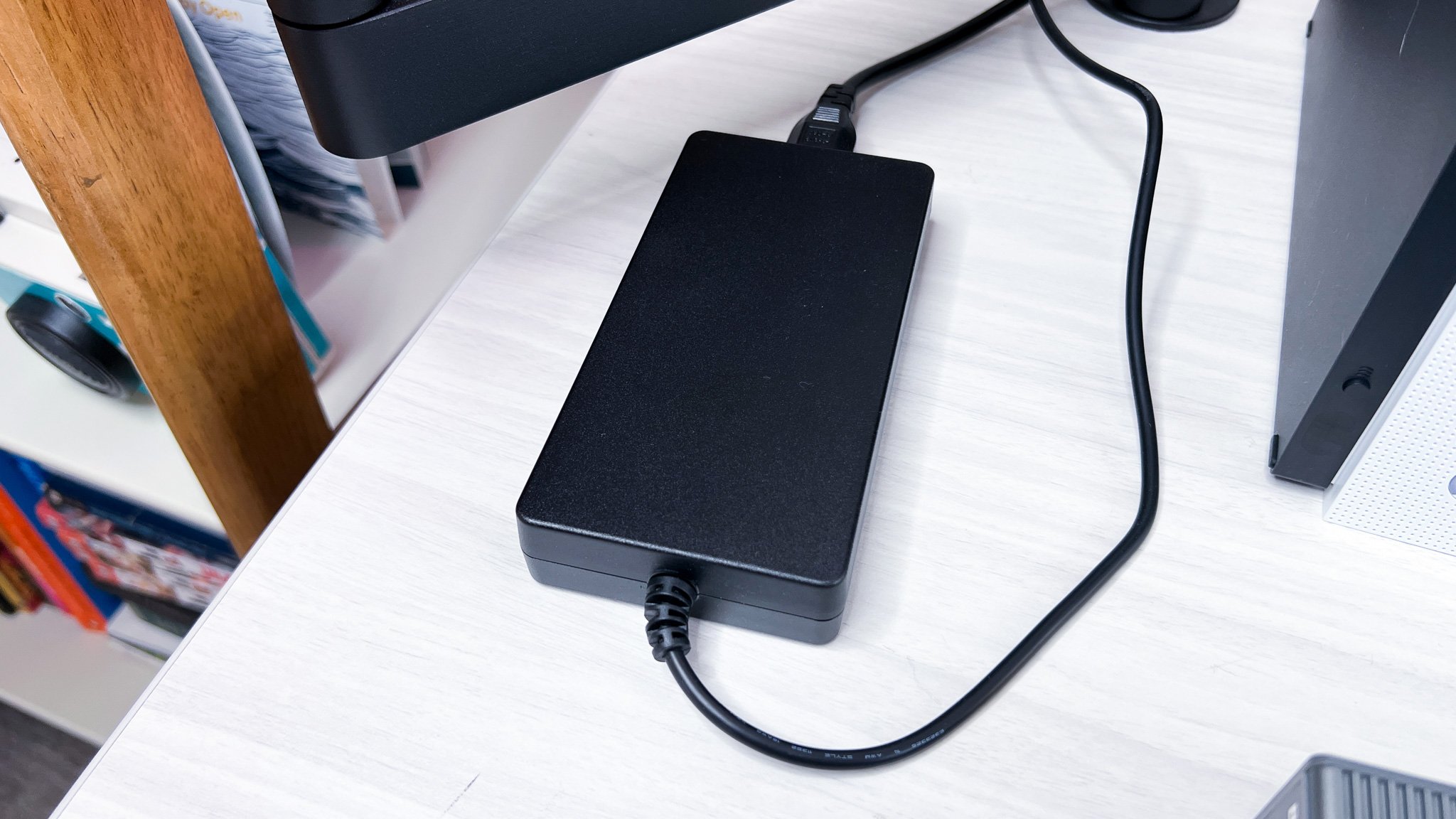
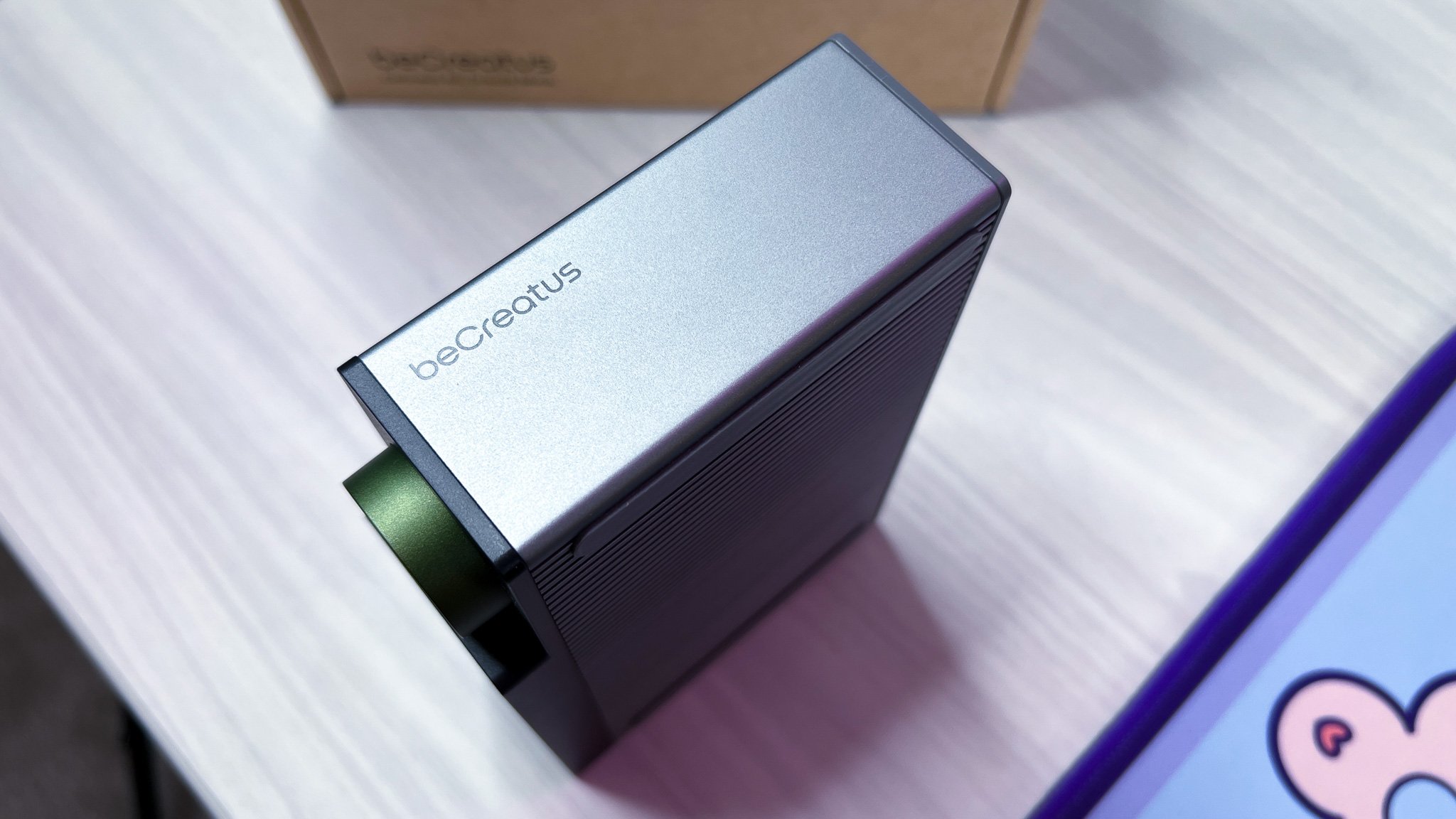
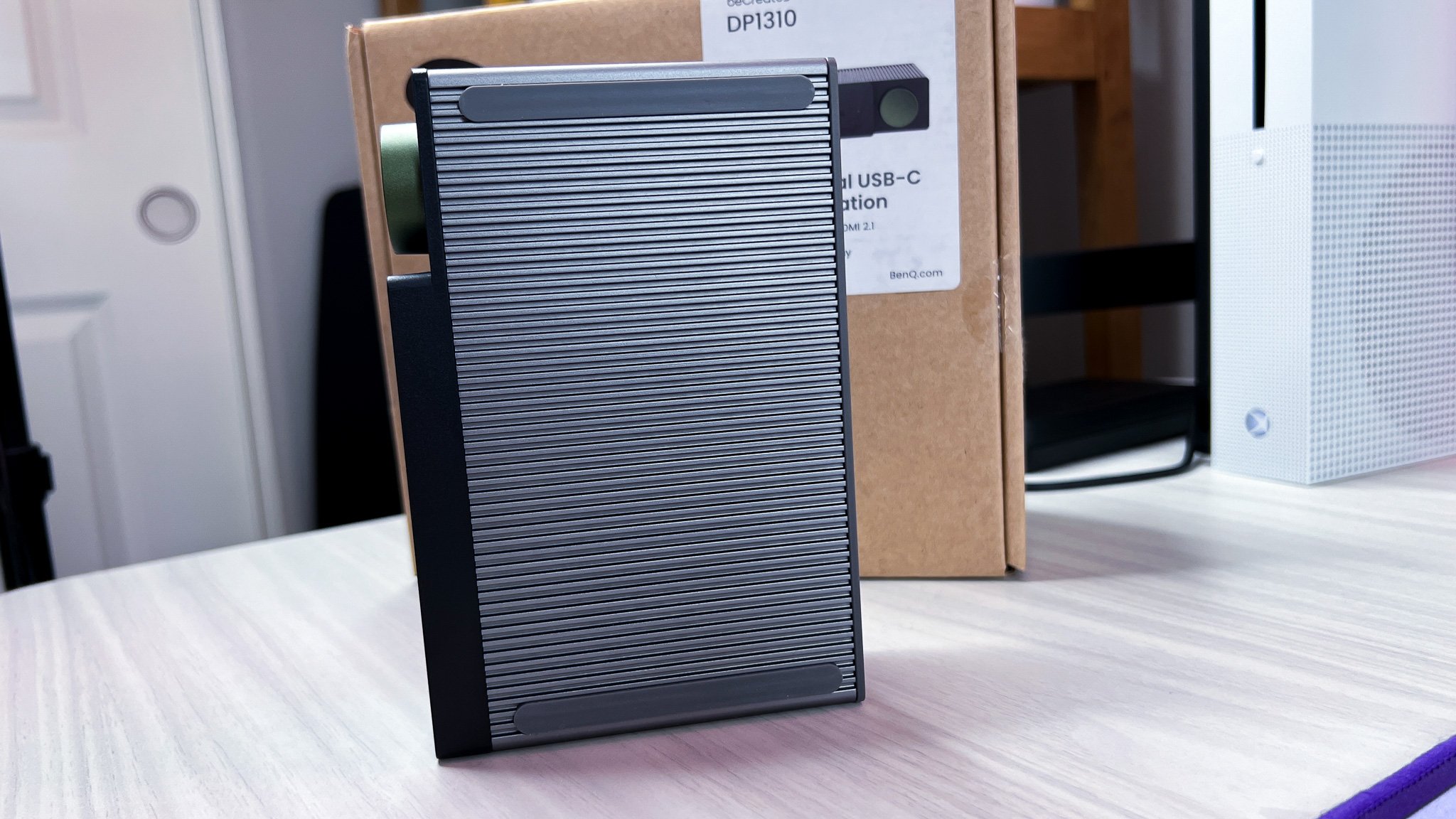
Finally, the power brick that powers the beCreatus DP1310 docking station is quite frankly, huge. As someone with a sit stand desk, I was a little unsure where to put this behemoth when I first set it up. Leaving it on my desk would contribute to making it feel cluttered but keeping it on the floor would make it a potential hazard when I move my desk up and down everyday and it may accidentally unplug from the movement or get kicked by my foot. Eventually, I settled on keeping it on the furthest top left corner of my desk and strategically placing my laptop stand in front of it so I wouldn’t have to see it. Maybe one day I’ll mount it under the table. Understandably, you’d need quite a bit to power this hefty dock, but hopefully future iterations can condense this battery pack design.
is it worth it?
My favorite part about the beCreatus DP1310 is that it simply works. Docking stations are kind of like the unsung hero in a desk setup. A strong one can power and withstand the energy consumption of all of your devices and peripherals while supporting you in your computing activities. While there are things I feel BenQ can do to improve future versions of it in the design department, the build quality and overall effectiveness of the docking station gives me confidence to use it everyday. At a price point of about $299, I think this is a premium computing accessory that is immensely beneficial. Let me know what your current desk setup is like and if you use a docking station.













Lida
As a former narrative journalist turned data scientist turned product manager, Lida’s always looking for gadgets that can adapt and optimize with her. Whether it’s a device that survives Lida’s torturous, adult working itinerary days or makes life easier for her as a new mom, she’s always thrilled to try something new and (maybe) give it the praise it deserves.